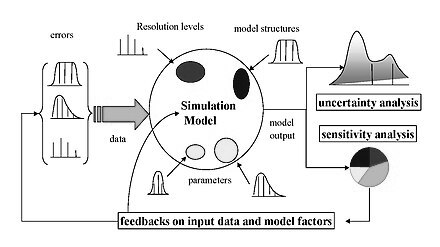Introduction
Sensitivity Analysis, a powerful mental model, plays a crucial role in decision-making processes. It involves examining how changes in variables or factors impact outcomes and decisions. Anchored in human psychology, this model helps us understand the potential impact of uncertainties and variations, enabling more informed and robust decision-making. In our day-to-day lives, sensitivity analysis is prevalent across various contexts, shaping personal life decisions, business strategies, and public policy-making. By delving into the examples of this mental model and exploring the biases that contribute to it, we can gain a deeper understanding of its implications. This article aims to elucidate the concept of sensitivity analysis, showcase its occurrence in different scenarios, examine associated biases, provide practical tips for avoiding its pitfalls, and emphasize the value of awareness and active avoidance of this mental trap.
The Relevance of Sensitivity Analysis in Decision-Making
Sensitivity Analysis is highly relevant in decision-making as it allows us to assess the impact of different variables on outcomes. It recognizes that the real world is filled with uncertainties and that decisions are rarely black and white. By understanding the sensitivity of outcomes to various factors, we can make more informed choices, mitigate risks, and anticipate potential consequences. This mental model encourages a proactive approach to decision-making by considering multiple scenarios and potential variations, leading to more robust strategies and plans.
Occurrence of Sensitivity Analysis in Various Contexts
- Personal Life Decisions: Imagine an individual planning their retirement savings strategy. Sensitivity analysis would involve considering different variables such as investment returns, inflation rates, and lifespan. By examining how changes in these factors affect the retirement plan, individuals can make informed decisions and adjust their savings and investment strategies accordingly.
- Business Scenarios: In the business world, sensitivity analysis is frequently employed. For instance, a company may conduct a sensitivity analysis to evaluate the impact of changes in raw material costs, market demand, or pricing strategies on their profitability. By assessing various scenarios, businesses can identify potential risks, develop contingency plans, and make more accurate financial projections.
- Public Policy-Making: Sensitivity analysis also plays a vital role in public policy-making. For example, when determining the feasibility of infrastructure projects, policymakers must consider various factors such as construction costs, environmental impacts, and potential population growth. Sensitivity analysis helps gauge how changes in these factors may affect the project’s viability, cost-benefit ratios, and long-term sustainability.
Mental Biases and Psychological Underpinnings
Several biases contribute to sensitivity analysis, impacting decision-making. Anchoring bias, for instance, influences our tendency to rely heavily on initial information or reference points when assessing variations. Confirmation bias may lead us to seek and favor information that supports our preconceived notions, disregarding alternative scenarios. The availability heuristic can cause us to overestimate the likelihood of events or variables that are easily recalled from memory. These biases can distort the sensitivity analysis process, leading to flawed decisions based on incomplete or biased information.
Identifying and Avoiding the Sensitivity Analysis Trap
To avoid succumbing to the pitfalls of sensitivity analysis, it is essential to adopt a systematic and objective approach to decision-making. Here are some practical strategies:
- Define Key Variables: Identify the critical variables or factors that significantly influence the outcomes of a decision or scenario. This helps ensure that the sensitivity analysis focuses on the most relevant aspects, reducing the risk of unnecessary complexity or excessive information overload.
- Conduct Range Analysis: Instead of considering only best-case or worst-case scenarios, analyze a range of possible values for each variable. Assess the impact of different values on outcomes to gain a more comprehensive understanding of the potential variations.
- Embrace Uncertainty: Acknowledge and account for uncertainties inherent in decision-making processes. Incorporate probabilistic analysis, such as Monte Carlo simulations, to quantify the likelihood of different outcomes based on varying inputs. This approach helps provide a more realistic and nuanced view of potential outcomes.
Conclusion
Sensitivity Analysis is a valuable mental model that empowers us to make informed decisions by considering the impact of variables on outcomes. By recognizing its relevance and prevalence in our daily lives, we can avoid the biases that hinder effective sensitivity analysis. Through structured analysis, consideration of alternative scenarios, and an understanding of the inherent uncertainties, we can navigate complex decision-making processes more effectively. Awareness and active avoidance of the sensitivity analysis trap enable us to make well-informed choices, anticipate potential risks, and optimize outcomes. Embracing sensitivity analysis as a tool for informed decision-making enhances our ability to navigate uncertainties and achieve our goals.
